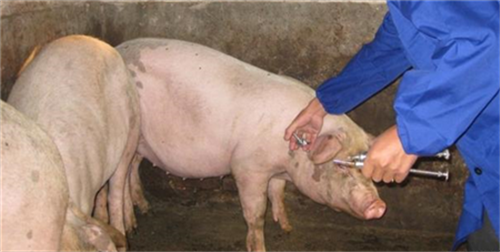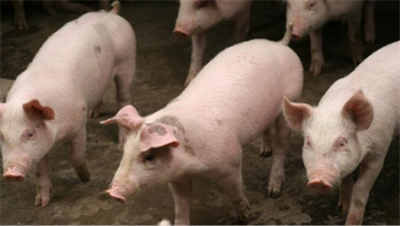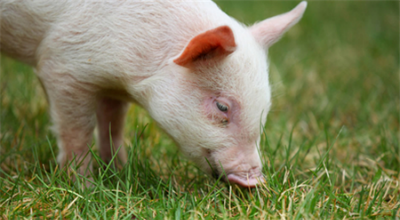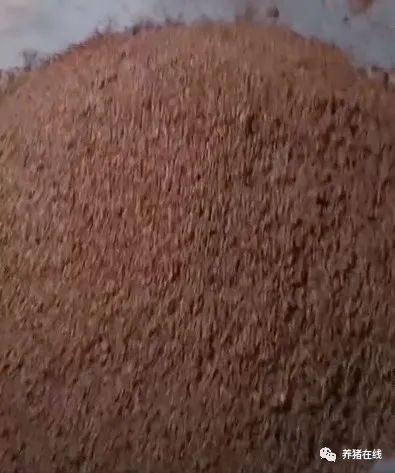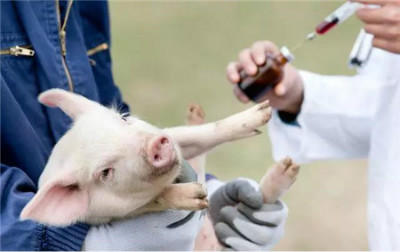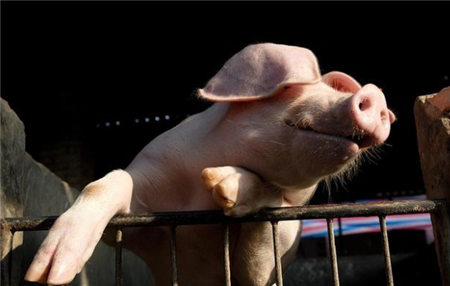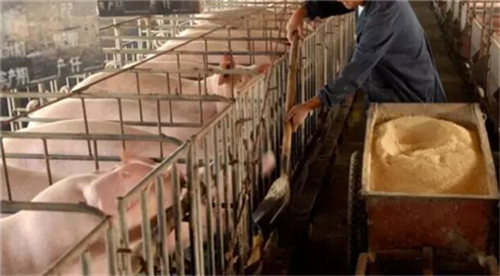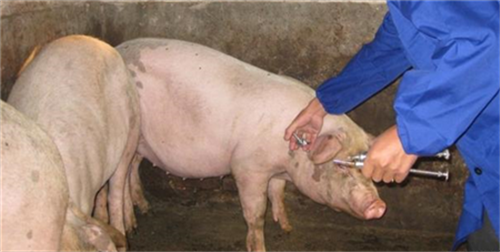猪精液-病毒传播的载体(二)
来源:黔农网 更新时间:2020-10-12 17:25:23
译者的话:
“公猪好,好一坡”,同理,公猪坏,那也是坏一坡。对于几乎100%采用人工授精的国内规模化猪场,公猪及精液的健康状况对整个生产系统的影响不言而喻,本文从不同病毒性病原在精液中被监测到的时间、对繁殖性能的影响、常规预防及健康监测、生物安全系统(设施、物流等)等方面充分讨论精液做为病毒传播载体的可能性及对策,从深度、广度及实操性本文是此专项议题难得一见的雄文。伟大始于分享,强烈推荐养猪生产者、健康管理者、专业公猪站运营相关人士观阅、扩散乃至收藏。另,小声提醒:建立多个独立的公猪站--不将所有鸡蛋放在一个筐子内也是精液风险管理的常见策略。
猪精液-病毒传播的载体(二)
Porcine semen as a vector for transmission of viral pathogens-Part 2
Dominiek Maesa,*, Ann Van Sooma, Ruth Appeltanta, Ioannis Arsenakisa, Hans Nauwynckb
a比利时,梅勒尔贝克,根特大学,兽医学院,畜群健康与产科学,繁殖科
a Department of Reproduction, Obstetrics and Herd Health, Faculty of Veterinary Medicine, Ghent University, Merelbeke, Belgium
b比利时,梅勒尔贝克,根特大学,兽医学院,病毒学实验室,免疫与寄生虫学,病毒学科
b Department of Virology, Immunology and Parasitology, Laboratory of Virology, Faculty of Veterinary Medicine, Ghent University, Merelbeke, Belgium
关键词 Keywords:
猪精液、猪、人工授精、病毒、回顾/检查
Semen, Pig, Artificial insemination, Virus, Review
接上文...
2.1 存在猪精液中且列入OIE名录的病毒
Viruses in porcine semen which are in the OIE list
2.1.2. 伪狂犬病病毒Aujeszky’s disease virus (pseudorabies virus)
表4:存在猪精液中,未列入OIE名录(2015)的病毒类病原体:公猪生殖道病变,对精液质量的影响,以及人工授精(AI)后病毒传染对母猪的影响。
Table 4: Viral pathogens not on the OIE list (2015) that have been found in porcine semen: lesions in the genital tract of boars, impact on semen quality, and transmission to recipient sow on artificial insemination (AI).
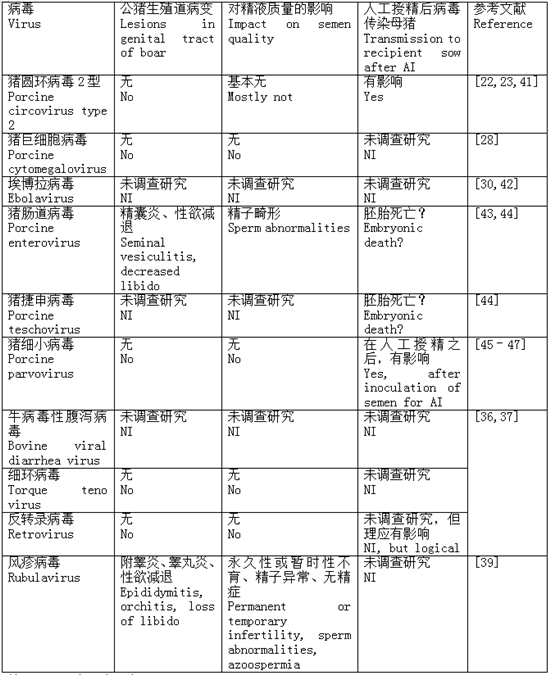
缩写:NI,未调查研究。
Abbreviation: NI, not investigated.
2.1 存在猪精液中且列入OIE名录的病毒
Viruses in porcine semen which are in the OIE list
2.1.3. 猪瘟病毒
Classical swine fever virus
猪瘟病毒是一种有包膜RNA病毒,属于黄病毒科,瘟病毒属。该病毒已从许多国家或地区根除,例如西欧、北美和澳大利亚[53]。然而,与野猪接触后,该病毒有可能会被引入家猪群中。1997至1998年,猪瘟(CSF)在荷兰流行期间,两个人工授精中心(AI)被感染,接着宣布有1680个猪群疑似感染猪瘟[54]。这凸显了人工授精中心传播潜在疾病的能力。实验证明,在感染猪瘟病毒后,公猪精液散毒的天数长达53天[11]。该病毒对精子形态和活力无影响,且精子浓度正常。用感染的精液授精,母猪可能会出现血清阳转,病毒可能会穿过胎盘屏障导致胚胎死亡,进而能从胎儿中分离出病毒[10]。
Classical swine fever virus is an enveloped RNA virus belonging to the family flaviviridae, genus Pestivirus. The virus has been eradicated from many countries or regions such as Western Europe, North America, and Australia [53]. However, the virus has been periodically reintroduced into domestic pigs via contact with wild boars. During the CSF epidemic in the Netherlands in 1997 to 1998, two AI centers became infected and 1680 pig herds were declared CSF suspect [54]. This highlights the importance of potential disease spread by AI centers. Boars experimentally infected with CSF virus have been shown to shed the virus in semen for up to 53 days after infection [11]. The virus does not affect the semen morphology and motility, and the concentration is within the normal range. Sows that are inseminated with contaminated semen may show seroconversion, the virus may cross the placental barrier causing embryonic mortality, and the virus can be isolated from fetuses [10].
因为该病毒具有高度传染性,特别是在其流行地区,影响仍将持续。与仔猪相比,感染种猪,有可能不会表现出显著临床症状和病理特征。如果猪瘟病毒免疫耐受仔猪出生,且临床症状正常,它们可以在无任何疾病迹象或血清学反应的情况下,散毒数月[10]。
The virus will remain important, especially in areas in which it is endemic, because the virus is highly contagious, and in contrast to piglets, infection in breeding pigs is not always associated with prominent clinical and pathologic signs. If clinically normal CSF virus immunotolerant piglets are born, they can spread the virus for months without showing signs of disease or eliciting a serologic response [10].
2.1.4. 口蹄疫病毒
Foot-and-mouth disease virus
口蹄疫病毒是一种无包膜小RNA病毒,属于小RNA病毒科、口蹄疫病毒属。该病毒在亚洲以及非洲和南美洲的一些地区流行[55]。自然感染的公猪,可在9天后从精液中检测到口蹄疫(FMD)病毒,但通过人工授精带毒精液,不会感染配种母猪[12]。尚无法说明病毒对精液质量的影响。口蹄疫病毒感染会导致病毒血症,随后病毒会散布全身几乎所有组织,包括生殖道和包皮口周围的皮肤[56]。精液中此病毒浓度较低[12]。许多国家已根除口蹄疫感染,其他国家也对公猪进行严密监测,因此这种病毒通过精液传播的风险很低。
Foot-and-mouth disease virus is a small nonenveloped RNA virus that belongs to the family of picornaviridae, genus Aphthovirus. The virus is endemic in Asia and some areas in Africa and South America [55]. After natural infection, FMD virus has been recovered from semen from infected boars for up to 9 days, but AI with contaminated semen failed to transmit the disease to serviced sows [12]. An effect on semen quality has not been described. Infection with FMD virus leads to viremia, with subsequent dissemination of the virus throughout virtually all tissues of the body, including the genital tract and the skin around the preputial orifice [56]. The viral concentration in semen has been found to be low [12]. Because infections are officially eradicated in many countries, and because boars are intensively monitored in other countries, the risk for transmission of this virus by the semen is low.
2.1.5. 日本乙型脑炎病毒
Japanese encephalitis virus
日本乙型脑炎病毒是一种有包膜RNA病毒,属于黄病毒科,黄病毒属,是人和动物间蚊媒传播的病原体。该病毒属于种猪繁殖类病原体,对养猪经济影响很大,尤其是在亚洲和澳大利亚北部,有可能会造成日系猪不育[13]。易感公猪感染后表现水肿、睾丸充血,精液中出现大量异常精子,明显降低精子和活精数量[13]。这些症状通常短暂存在,大多数公猪可以完全康复。从感染睾丸炎的公猪睾丸中已分离出该病毒,且其可在精液中散毒5周。如果使用带毒精液对后备母猪输精,则病毒容易传播[13,57]。
Japanese encephalitis virus is an enveloped RNA virus that belongs to the family flaviviridae, genus Flavivirus. It is a mosquito-borne human and animal pathogen. The virus represents an economically important reproductive pathogen of breeding pigs, especially in Asia and Northern Australia, and may cause infertility in Japanese pigs [13]. Infection of susceptible boars resulted in edematous, congested testicles and semen with numerous abnormal spermatozoa, and significantly decreased total and motile sperm counts [13]. These changes are usually temporary, and most boars recover completely. The virus has been isolated from the testicles of boars with orchitis and also can be shed in the semen for 5 weeks. The virus can be easily transmitted if gilts are inseminated with infected semen [13,57].
2.1 存在猪精液中且列入OIE名录的病毒
Viruses in porcine semen which are in the OIE list
2.1.6. 猪繁殖与呼吸综合征病毒(蓝耳病毒)
Porcine reproductive and respiratory syndrome virus
蓝耳病毒(PRRSV)是一种有包膜RNA病毒,属于动脉炎病毒科,动脉炎病毒属。感染蓝耳(PRRS)病毒,会引发妊娠母猪繁殖障碍、乳猪死亡以及不同日龄猪只的呼吸系统疾病[58]。成年公猪通常没有或只有轻微症状。该病毒在动物之间很容易传播。感染PRRSV的动物,可通过唾液、鼻分泌物、尿液、粪便以及精液进行散毒[19,20]。已经证实PRRSV可通过血管进入生殖道组织进行复制。也有人提出,将生殖道血液和淋巴中感染的单核细胞和巨噬细胞,移行至精液中[15,59]。
The PRRSV is an enveloped RNA virus that belongs to the family arteriviridae, genus Arterivirus. Infections with PRRS virus are associated with reproductive failure in pregnant sows, mortality in suckling pigs, and respiratory disease in pigs of all ages [58]. Usually, no or only mild symptoms are seen in mature boars. The virus is easily transmitted between animals. Infected animals can shed PRRSV in saliva, nasal secretions, urine, feces, and also in semen [19,20]. Vascular dissemination and replication of PRRSV in tissues of the reproductive tract has been shown. Also migration of infected monocytes and macrophages from the blood and lymph of the reproductive tract into the semen has been suggested [15,59].
实验感染公猪,其精液散毒期差异较大,从感染后2天[14]到92天[17]不等(平均35天;表1)。在随后的研究中,公猪感染101天后安乐死,从尿道球腺中分离出PRRSV。感染后散毒的差异可能是由不同的因素引起,如公猪的个体差异[17,60]、品种[60],毒株类型以及病毒检测技术(即病毒分离、聚合酶链反应[PCR]、巢式实时PCR、反转录酶PCR、猪生物测定)。使用生物测定方法,在感染后4到42天的精液样本中,发现传染性病毒[19]。即使无病毒血症及抗体中和,精液也可散毒[17,60]。
The duration of shedding in semen samples of experimentally infected boars varies widely, ranging from 2 [14] to 92 [17] days after infection (mean 35 days; Table 1). In the latter study, PRRSV was isolated from the bulbourethral gland of a boar euthanized 101 days after infection. This marked variability in shedding may be due to different factors including individual boar variation [17,60], breed of the boar [60], the type of virus strain, and the technique used for detection of the virus (i.e., virus isolation, polymerase chain reaction [PCR], nested real-time PCR, reverse transcriptase PCR, swine bioassay). Using a bioassay, infectious virus has been shown in semen samples from 4 to 42 days after infection [19]. The virus can be shed in semen, even in the absence of viremia and in the presence of neutralizing antibodies [17,60].
疾病的急性期,除厌食、嗜睡和呼吸道临床症状外,公猪也可能性欲低下。不同的研究显示,感染PRRSV对精液质量的影响差异很大。一些研究表明,感染后2至10周检测到精液质量急剧变化,如精子活力降低、顶体异常、形态和射精量改变,而另一些研究未发现异常[19,61]。
During acute illness, in addition to anorexia, lethargy, and respiratory clinical signs, boars may also lack libido. The effect of PRRSV infection on semen quality varies considerably between studies. In some studies, drastic changes in semen quality, e.g., reduced motility, abnormal acrosomes, morphologic alterations, and volume of the semen, were observed 2 to 10 weeks after infection, whereas no abnormalities were found in other studies [19,61].
已证实,处于急性感染期的公猪,可通过精液将PRRSV传播至种猪群内[61]。不过,病毒传播力取决于精液中病毒的数量,所以病毒有可能不会传播[62]。Prieto等人[20]研究表明,感染公猪的单次射精精液内,PRRSV滴度为7×102 TCID50/mL。如果对单次射精精液进行稀释(15-30倍),则病毒滴度约为4×101 TCID50/mL,相当于每80 mL稀释精液中PRRSV的滴度约为3×103 TCID50。母猪与感染公猪[61]配种或输入实验感染的精液[19,21],即使未出现病毒血症,也会发生PRRSV血清阳转。Prieto等人[21]研究显示,使用含有PRRSV的精液,对血清阴性或未免疫的后备母猪进行授精,受胎率几乎不受影响,但可能出现早期胚胎感染和死亡。
Transmission of PRRSV from fresh semen of acutely infected boars into breeding herds has been shown [61]. However, transmission does not always occur as it may depend on the amount of virus present in the semen [62]. In a study of Prieto et al. [20], the PRRSV titer in an ejaculate of an infected boar was 7×102 TCID50/mL. If the ejaculate is extended (15–30 times), the virus titer will be approximately 4×101 TCID50/mL of extended semen, corresponding with a total amount of approximately 3×103 TCID50 of PRRSV in each dose of 80-mL extended semen. Sows bred by infected boars [61] or with experimentally contaminated semen [19,21] showed seroconversion to PRRSV, even in the absence of detectable viremia [17,60]. Prieto et al. [21] reported that insemination of seronegative or preimmunized gilts with semen containing PRRSV often has little or no effect on conception rates but may result in early embryonic infection and death.
2.1.7. 猪水泡病病毒
Swine vesicular disease virus
猪水泡病(SVD)病毒是一种无包膜小RNA病毒,属于小RNA病毒科、肠病毒属。欧洲、亚洲和中美洲的一些国家记录了SVD病毒的爆发情况。SVD病毒与口蹄疫(FMD)病毒可能导致相似病变。因此,要着重注意SVD与FMD的鉴别诊断。自然感染后4天内,可从感染公猪的精液中分离出SVD病毒,但通过人工授精带毒精液,不会感染配种母猪[12]。
The swine vesicular disease (SVD) virus is a small nonenveloped RNA virus of the family picornaviridae, genus Enterovirus. Outbreaks with SVD virus have been documented in some countries in Europe, Asia and Central America. Infection with the SVD virus may cause lesions similar to those on infection with the FMD virus. Therefore, SVD is important in the differential diagnosis of FMD. After natural infection, SVD virus has been isolated from infected boar semen for up to 4 days but AI with contaminated semen failed to transmit the disease to sows [12].
2.2 存在猪精液中,未列入OIE名录的病毒
Viruses in porcine semen which are not in the OIE list
2.2.1 猪圆环病毒2型
Porcine circovirus type 2
猪圆环病毒2型(PCV2)是一种无包膜小DNA病毒,属于圆环病毒科、圆环病毒属。猪同时感染PCV2并出现其他相关疾病,一般统称为PCV2相关疾病[63]。感染PCV2病毒后,母猪会出现繁殖障碍,如晚期流产和死胎,但在实际生产中并不常见。感染PCV2的成年公猪通常不会出现临床症状及病变[24,26]。自然感染和实验感染的公猪精液中,已检测到该病毒[24]。实验感染中,分别在感染后第2天和第5天,于血清和精液中检测到PCV2 DNA [24,26]。检测精液相关病毒之前,先进行PCV2病毒血症检测,但即使未出现病毒血症,精液也可能散毒。实验感染公猪后,一些研究发现公猪精液间断散毒[24,25],而其他研究则发现精液持续散毒[26]。McIntosh等人[27]表明,自然感染的公猪在长达27周的时间内,精液偶尔散毒。这些数据表明,精液可能是PCV2的重要载体。病毒常污染精浆,但是在精浆和精子中均能检测到PCV2 [23,33]。精子很少发生形态、活力和浓度方面的变化[26]。能繁母猪感染PCV2后也很少表现临床症状[64]。
Porcine circovirus type 2 (PCV2) is a small nonenveloped DNA virus that belongs to the family circoviridae, genus Circovirus. Infections with PCV2 in pigs are associated with different disease conditions commonly referred to as PCV2-associated disease [63]. Reproductive problems in sows such as late-term abortions and stillbirths have also been described but are considered to be rare under field conditions. Mature boars infected with PCV2 generally lack clinical signs and lesions [24,26]. The virus has been detected in semen of naturally and experimentally infected boars [24]. On experimental infection, PCV2 DNA has been detected in serum and semen at 2 and 5 days after infection, respectively [24,26]. Detection of PCV2 viremia commonly precedes the detection of semen-associated virus, but semen shedding may occur in the absence of viremia. After experimental infection of boars, some studies found intermittent shedding in semen [24,25], whereas other studies observed continuous shedding of the virus [26]. McIntosh et al. [27] showed that naturally infected boars shed the virus sporadically in semen for up to 27 weeks. These data suggest that semen may be a significant vehicle for PCV2. The seminal plasma is usually contaminated, but PCV2 is not only detected in the non–sperm cell fraction but also in the sperm one [23,33]. Changes in semen morphology, motility, and concentration are not commonly found [26]. Clinical signs on PCV2 infection in breeding sows are rare [64].
在精液中加入PCV2,对未免疫过的母猪进行实验感染,则会出现繁殖障碍、胎儿感染[41]。但是,自然感染情况下,精液内PCV2病毒数量是否足以感染母猪或其胎儿,尚不明确。该病毒能够在无透明带的胚胎中复制,从而导致胚胎死亡[65,66]。在PCV2相关疾病中,不常见到分娩推迟或假妊娠。受PCV2影响的窝,仔猪死亡数量可能会增加[67]。
Naïve sows inseminated with semen experimentally spiked with PCV2 exhibited reproductive failure, and their fetuses became infected [41]. However, it is not known if the quantity of PCV2 naturally shed in semen is sufficient to infect sows or their fetuses. The virus is able to replicate in zona pellucida–free embryos, leading to embryonic death [65,66]. Delayed farrowing or pseudopregnancy is less frequently observed with PCV2-associated reproductive failure. An increased number of nonviable piglets may be present in PCV2-affected litters [67].
2.2.2. 猪巨细胞病毒
Porcine cytomegalovirus
猪巨细胞病毒或猪疱疹病毒2型是一种DNA病毒,属于疱疹病毒科,疱疹病毒亚科,但不属于任何属。成年猪只感染猪巨细胞病毒,通常为亚临床感染。公猪感染后,在睾丸和附睾中能检测到病毒[28]。射出的精液是否散毒,尚未明确。
Porcine cytomegalovirus or suid herpesvirus type 2 is a DNA virus that belongs to the subfamily betaherpesvirinae of the family herpesviridae but is not assigned to any genus. Infection with porcine cytomegalovirus is usually subclinical in adults. After infection in boars, the virus was detected in the testis and epididymis [28]. Shedding of virus in ejaculated semen has not been determined.
2.2.3. 猪细小病毒
Porcine parvovirus
猪细小病毒(PPV)是一种无包膜小DNA病毒,属于细小病毒科,细小病毒属。该病毒在猪群中很常见。PPV主要的传播途径是口鼻传播和胎盘传播。已多次从自然感染的公猪精液中分离出该病毒。急性感染期,公猪精液可散毒[34];虽尚未证实之后阶段是否继续散毒,但是由于子宫早期感染,可能导致PPV免疫耐受个体产生[68]。也可能是含有病毒的粪便微粒,或雄性生殖器官,导致精液污染[45,46]。公猪群中,感染后通常无临床症状。实验感染公猪,其繁殖力或性欲[46],精子数量、精液量、精子活力或形态[47]等方面鲜有变化。能繁母猪群感染PPV后,通常只表现出繁殖障碍:返情、窝仔数减少、木乃伊胎数量增加[69]。被PPV污染的精液,在造成繁殖障碍时所起的作用,尚未明确。
Porcine parvovirus (PPV) is a small nonenveloped DNA virus that belongs to the family parvoviridae, genus Parvovirus. The virus is ubiquitous in the pig population. The main transmission routes of PPV are oronasal and transplacental. The virus has been isolated many times from semen of naturally infected boars. Boars can shed the virus in semen during the acute phase of infection [34]; shedding beyond this phase has not been demonstrated, but the possibility of immunotolerant carriers of PPV as a result of early in utero infection has been suggested [68]. Semen may also become contaminated by fecal particles containing virus, or within the male reproductive tract organs [45,46]. In boars, usually no clinical signs after infection are observed. On experimental infection in boars, no alternations in fertility or libido [46] or in sperm output, ejaculate volume, motility, or morphologic defects [47] were found. In breeding females, the major and often only clinical sign of PPV infection is reproductive failure: return to estrus, fewer pigs per litter, and increased numbers of mummified fetuses [69]. The role of semen contaminated with PPV in creating clinical reproductive problems has not been clearly established.
近期,在13份精液样本[70]中的5份(38.5%)中检到一种新型细小病毒,即PPV4,该病毒属于细小病毒科、博卡病毒属,且在Csagola等人[71]的研究中,一半的精液样品也检测到该病毒。尚不确定该病毒对猪群健康的影响。在匈牙利不同的猪群中,发现有其他新型猪细小病毒(PPV2, PPV3,猪细小病毒1和2,其他标记6V、7V的猪博卡病毒,猪类博卡病毒),但无法在精液中检测到[71]。
Recently, a novel parvovirus namely PPV4, belonging to the family parvoviridae, genus Bocavirus, was detected in 5 out of 13 (38.5%) semen samples [70], and in one out of two semen samples in a study by Cságola et al. [71]. The role of this virus in swine health has not been determined. Other novel porcine parvoviruses (PPV2, PPV3, porcine bocaviruses 1 and 2, other porcine bocaviruses labeled 6V and 7V, porcine boca-like virus) were found in pigs from different herds in Hungary, but they could not be detected in semen [71].
未完待续...
To be continued…
“公猪好,好一坡”,同理,公猪坏,那也是坏一坡。对于几乎100%采用人工授精的国内规模化猪场,公猪及精液的健康状况对整个生产系统的影响不言而喻,本文从不同病毒性病原在精液中被监测到的时间、对繁殖性能的影响、常规预防及健康监测、生物安全系统(设施、物流等)等方面充分讨论精液做为病毒传播载体的可能性及对策,从深度、广度及实操性本文是此专项议题难得一见的雄文。伟大始于分享,强烈推荐养猪生产者、健康管理者、专业公猪站运营相关人士观阅、扩散乃至收藏。另,小声提醒:建立多个独立的公猪站--不将所有鸡蛋放在一个筐子内也是精液风险管理的常见策略。
猪精液-病毒传播的载体(二)
Porcine semen as a vector for transmission of viral pathogens-Part 2
Dominiek Maesa,*, Ann Van Sooma, Ruth Appeltanta, Ioannis Arsenakisa, Hans Nauwynckb
a比利时,梅勒尔贝克,根特大学,兽医学院,畜群健康与产科学,繁殖科
a Department of Reproduction, Obstetrics and Herd Health, Faculty of Veterinary Medicine, Ghent University, Merelbeke, Belgium
b比利时,梅勒尔贝克,根特大学,兽医学院,病毒学实验室,免疫与寄生虫学,病毒学科
b Department of Virology, Immunology and Parasitology, Laboratory of Virology, Faculty of Veterinary Medicine, Ghent University, Merelbeke, Belgium
关键词 Keywords:
猪精液、猪、人工授精、病毒、回顾/检查
Semen, Pig, Artificial insemination, Virus, Review
接上文...
2.1 存在猪精液中且列入OIE名录的病毒
Viruses in porcine semen which are in the OIE list
2.1.2. 伪狂犬病病毒Aujeszky’s disease virus (pseudorabies virus)
表4:存在猪精液中,未列入OIE名录(2015)的病毒类病原体:公猪生殖道病变,对精液质量的影响,以及人工授精(AI)后病毒传染对母猪的影响。
Table 4: Viral pathogens not on the OIE list (2015) that have been found in porcine semen: lesions in the genital tract of boars, impact on semen quality, and transmission to recipient sow on artificial insemination (AI).

缩写:NI,未调查研究。
Abbreviation: NI, not investigated.
2.1 存在猪精液中且列入OIE名录的病毒
Viruses in porcine semen which are in the OIE list
2.1.3. 猪瘟病毒
Classical swine fever virus
猪瘟病毒是一种有包膜RNA病毒,属于黄病毒科,瘟病毒属。该病毒已从许多国家或地区根除,例如西欧、北美和澳大利亚[53]。然而,与野猪接触后,该病毒有可能会被引入家猪群中。1997至1998年,猪瘟(CSF)在荷兰流行期间,两个人工授精中心(AI)被感染,接着宣布有1680个猪群疑似感染猪瘟[54]。这凸显了人工授精中心传播潜在疾病的能力。实验证明,在感染猪瘟病毒后,公猪精液散毒的天数长达53天[11]。该病毒对精子形态和活力无影响,且精子浓度正常。用感染的精液授精,母猪可能会出现血清阳转,病毒可能会穿过胎盘屏障导致胚胎死亡,进而能从胎儿中分离出病毒[10]。
Classical swine fever virus is an enveloped RNA virus belonging to the family flaviviridae, genus Pestivirus. The virus has been eradicated from many countries or regions such as Western Europe, North America, and Australia [53]. However, the virus has been periodically reintroduced into domestic pigs via contact with wild boars. During the CSF epidemic in the Netherlands in 1997 to 1998, two AI centers became infected and 1680 pig herds were declared CSF suspect [54]. This highlights the importance of potential disease spread by AI centers. Boars experimentally infected with CSF virus have been shown to shed the virus in semen for up to 53 days after infection [11]. The virus does not affect the semen morphology and motility, and the concentration is within the normal range. Sows that are inseminated with contaminated semen may show seroconversion, the virus may cross the placental barrier causing embryonic mortality, and the virus can be isolated from fetuses [10].
因为该病毒具有高度传染性,特别是在其流行地区,影响仍将持续。与仔猪相比,感染种猪,有可能不会表现出显著临床症状和病理特征。如果猪瘟病毒免疫耐受仔猪出生,且临床症状正常,它们可以在无任何疾病迹象或血清学反应的情况下,散毒数月[10]。
The virus will remain important, especially in areas in which it is endemic, because the virus is highly contagious, and in contrast to piglets, infection in breeding pigs is not always associated with prominent clinical and pathologic signs. If clinically normal CSF virus immunotolerant piglets are born, they can spread the virus for months without showing signs of disease or eliciting a serologic response [10].
2.1.4. 口蹄疫病毒
Foot-and-mouth disease virus
口蹄疫病毒是一种无包膜小RNA病毒,属于小RNA病毒科、口蹄疫病毒属。该病毒在亚洲以及非洲和南美洲的一些地区流行[55]。自然感染的公猪,可在9天后从精液中检测到口蹄疫(FMD)病毒,但通过人工授精带毒精液,不会感染配种母猪[12]。尚无法说明病毒对精液质量的影响。口蹄疫病毒感染会导致病毒血症,随后病毒会散布全身几乎所有组织,包括生殖道和包皮口周围的皮肤[56]。精液中此病毒浓度较低[12]。许多国家已根除口蹄疫感染,其他国家也对公猪进行严密监测,因此这种病毒通过精液传播的风险很低。
Foot-and-mouth disease virus is a small nonenveloped RNA virus that belongs to the family of picornaviridae, genus Aphthovirus. The virus is endemic in Asia and some areas in Africa and South America [55]. After natural infection, FMD virus has been recovered from semen from infected boars for up to 9 days, but AI with contaminated semen failed to transmit the disease to serviced sows [12]. An effect on semen quality has not been described. Infection with FMD virus leads to viremia, with subsequent dissemination of the virus throughout virtually all tissues of the body, including the genital tract and the skin around the preputial orifice [56]. The viral concentration in semen has been found to be low [12]. Because infections are officially eradicated in many countries, and because boars are intensively monitored in other countries, the risk for transmission of this virus by the semen is low.
2.1.5. 日本乙型脑炎病毒
Japanese encephalitis virus
日本乙型脑炎病毒是一种有包膜RNA病毒,属于黄病毒科,黄病毒属,是人和动物间蚊媒传播的病原体。该病毒属于种猪繁殖类病原体,对养猪经济影响很大,尤其是在亚洲和澳大利亚北部,有可能会造成日系猪不育[13]。易感公猪感染后表现水肿、睾丸充血,精液中出现大量异常精子,明显降低精子和活精数量[13]。这些症状通常短暂存在,大多数公猪可以完全康复。从感染睾丸炎的公猪睾丸中已分离出该病毒,且其可在精液中散毒5周。如果使用带毒精液对后备母猪输精,则病毒容易传播[13,57]。
Japanese encephalitis virus is an enveloped RNA virus that belongs to the family flaviviridae, genus Flavivirus. It is a mosquito-borne human and animal pathogen. The virus represents an economically important reproductive pathogen of breeding pigs, especially in Asia and Northern Australia, and may cause infertility in Japanese pigs [13]. Infection of susceptible boars resulted in edematous, congested testicles and semen with numerous abnormal spermatozoa, and significantly decreased total and motile sperm counts [13]. These changes are usually temporary, and most boars recover completely. The virus has been isolated from the testicles of boars with orchitis and also can be shed in the semen for 5 weeks. The virus can be easily transmitted if gilts are inseminated with infected semen [13,57].
2.1 存在猪精液中且列入OIE名录的病毒
Viruses in porcine semen which are in the OIE list
2.1.6. 猪繁殖与呼吸综合征病毒(蓝耳病毒)
Porcine reproductive and respiratory syndrome virus
蓝耳病毒(PRRSV)是一种有包膜RNA病毒,属于动脉炎病毒科,动脉炎病毒属。感染蓝耳(PRRS)病毒,会引发妊娠母猪繁殖障碍、乳猪死亡以及不同日龄猪只的呼吸系统疾病[58]。成年公猪通常没有或只有轻微症状。该病毒在动物之间很容易传播。感染PRRSV的动物,可通过唾液、鼻分泌物、尿液、粪便以及精液进行散毒[19,20]。已经证实PRRSV可通过血管进入生殖道组织进行复制。也有人提出,将生殖道血液和淋巴中感染的单核细胞和巨噬细胞,移行至精液中[15,59]。
The PRRSV is an enveloped RNA virus that belongs to the family arteriviridae, genus Arterivirus. Infections with PRRS virus are associated with reproductive failure in pregnant sows, mortality in suckling pigs, and respiratory disease in pigs of all ages [58]. Usually, no or only mild symptoms are seen in mature boars. The virus is easily transmitted between animals. Infected animals can shed PRRSV in saliva, nasal secretions, urine, feces, and also in semen [19,20]. Vascular dissemination and replication of PRRSV in tissues of the reproductive tract has been shown. Also migration of infected monocytes and macrophages from the blood and lymph of the reproductive tract into the semen has been suggested [15,59].
实验感染公猪,其精液散毒期差异较大,从感染后2天[14]到92天[17]不等(平均35天;表1)。在随后的研究中,公猪感染101天后安乐死,从尿道球腺中分离出PRRSV。感染后散毒的差异可能是由不同的因素引起,如公猪的个体差异[17,60]、品种[60],毒株类型以及病毒检测技术(即病毒分离、聚合酶链反应[PCR]、巢式实时PCR、反转录酶PCR、猪生物测定)。使用生物测定方法,在感染后4到42天的精液样本中,发现传染性病毒[19]。即使无病毒血症及抗体中和,精液也可散毒[17,60]。
The duration of shedding in semen samples of experimentally infected boars varies widely, ranging from 2 [14] to 92 [17] days after infection (mean 35 days; Table 1). In the latter study, PRRSV was isolated from the bulbourethral gland of a boar euthanized 101 days after infection. This marked variability in shedding may be due to different factors including individual boar variation [17,60], breed of the boar [60], the type of virus strain, and the technique used for detection of the virus (i.e., virus isolation, polymerase chain reaction [PCR], nested real-time PCR, reverse transcriptase PCR, swine bioassay). Using a bioassay, infectious virus has been shown in semen samples from 4 to 42 days after infection [19]. The virus can be shed in semen, even in the absence of viremia and in the presence of neutralizing antibodies [17,60].
疾病的急性期,除厌食、嗜睡和呼吸道临床症状外,公猪也可能性欲低下。不同的研究显示,感染PRRSV对精液质量的影响差异很大。一些研究表明,感染后2至10周检测到精液质量急剧变化,如精子活力降低、顶体异常、形态和射精量改变,而另一些研究未发现异常[19,61]。
During acute illness, in addition to anorexia, lethargy, and respiratory clinical signs, boars may also lack libido. The effect of PRRSV infection on semen quality varies considerably between studies. In some studies, drastic changes in semen quality, e.g., reduced motility, abnormal acrosomes, morphologic alterations, and volume of the semen, were observed 2 to 10 weeks after infection, whereas no abnormalities were found in other studies [19,61].
已证实,处于急性感染期的公猪,可通过精液将PRRSV传播至种猪群内[61]。不过,病毒传播力取决于精液中病毒的数量,所以病毒有可能不会传播[62]。Prieto等人[20]研究表明,感染公猪的单次射精精液内,PRRSV滴度为7×102 TCID50/mL。如果对单次射精精液进行稀释(15-30倍),则病毒滴度约为4×101 TCID50/mL,相当于每80 mL稀释精液中PRRSV的滴度约为3×103 TCID50。母猪与感染公猪[61]配种或输入实验感染的精液[19,21],即使未出现病毒血症,也会发生PRRSV血清阳转。Prieto等人[21]研究显示,使用含有PRRSV的精液,对血清阴性或未免疫的后备母猪进行授精,受胎率几乎不受影响,但可能出现早期胚胎感染和死亡。
Transmission of PRRSV from fresh semen of acutely infected boars into breeding herds has been shown [61]. However, transmission does not always occur as it may depend on the amount of virus present in the semen [62]. In a study of Prieto et al. [20], the PRRSV titer in an ejaculate of an infected boar was 7×102 TCID50/mL. If the ejaculate is extended (15–30 times), the virus titer will be approximately 4×101 TCID50/mL of extended semen, corresponding with a total amount of approximately 3×103 TCID50 of PRRSV in each dose of 80-mL extended semen. Sows bred by infected boars [61] or with experimentally contaminated semen [19,21] showed seroconversion to PRRSV, even in the absence of detectable viremia [17,60]. Prieto et al. [21] reported that insemination of seronegative or preimmunized gilts with semen containing PRRSV often has little or no effect on conception rates but may result in early embryonic infection and death.
2.1.7. 猪水泡病病毒
Swine vesicular disease virus
猪水泡病(SVD)病毒是一种无包膜小RNA病毒,属于小RNA病毒科、肠病毒属。欧洲、亚洲和中美洲的一些国家记录了SVD病毒的爆发情况。SVD病毒与口蹄疫(FMD)病毒可能导致相似病变。因此,要着重注意SVD与FMD的鉴别诊断。自然感染后4天内,可从感染公猪的精液中分离出SVD病毒,但通过人工授精带毒精液,不会感染配种母猪[12]。
The swine vesicular disease (SVD) virus is a small nonenveloped RNA virus of the family picornaviridae, genus Enterovirus. Outbreaks with SVD virus have been documented in some countries in Europe, Asia and Central America. Infection with the SVD virus may cause lesions similar to those on infection with the FMD virus. Therefore, SVD is important in the differential diagnosis of FMD. After natural infection, SVD virus has been isolated from infected boar semen for up to 4 days but AI with contaminated semen failed to transmit the disease to sows [12].
2.2 存在猪精液中,未列入OIE名录的病毒
Viruses in porcine semen which are not in the OIE list
2.2.1 猪圆环病毒2型
Porcine circovirus type 2
猪圆环病毒2型(PCV2)是一种无包膜小DNA病毒,属于圆环病毒科、圆环病毒属。猪同时感染PCV2并出现其他相关疾病,一般统称为PCV2相关疾病[63]。感染PCV2病毒后,母猪会出现繁殖障碍,如晚期流产和死胎,但在实际生产中并不常见。感染PCV2的成年公猪通常不会出现临床症状及病变[24,26]。自然感染和实验感染的公猪精液中,已检测到该病毒[24]。实验感染中,分别在感染后第2天和第5天,于血清和精液中检测到PCV2 DNA [24,26]。检测精液相关病毒之前,先进行PCV2病毒血症检测,但即使未出现病毒血症,精液也可能散毒。实验感染公猪后,一些研究发现公猪精液间断散毒[24,25],而其他研究则发现精液持续散毒[26]。McIntosh等人[27]表明,自然感染的公猪在长达27周的时间内,精液偶尔散毒。这些数据表明,精液可能是PCV2的重要载体。病毒常污染精浆,但是在精浆和精子中均能检测到PCV2 [23,33]。精子很少发生形态、活力和浓度方面的变化[26]。能繁母猪感染PCV2后也很少表现临床症状[64]。
Porcine circovirus type 2 (PCV2) is a small nonenveloped DNA virus that belongs to the family circoviridae, genus Circovirus. Infections with PCV2 in pigs are associated with different disease conditions commonly referred to as PCV2-associated disease [63]. Reproductive problems in sows such as late-term abortions and stillbirths have also been described but are considered to be rare under field conditions. Mature boars infected with PCV2 generally lack clinical signs and lesions [24,26]. The virus has been detected in semen of naturally and experimentally infected boars [24]. On experimental infection, PCV2 DNA has been detected in serum and semen at 2 and 5 days after infection, respectively [24,26]. Detection of PCV2 viremia commonly precedes the detection of semen-associated virus, but semen shedding may occur in the absence of viremia. After experimental infection of boars, some studies found intermittent shedding in semen [24,25], whereas other studies observed continuous shedding of the virus [26]. McIntosh et al. [27] showed that naturally infected boars shed the virus sporadically in semen for up to 27 weeks. These data suggest that semen may be a significant vehicle for PCV2. The seminal plasma is usually contaminated, but PCV2 is not only detected in the non–sperm cell fraction but also in the sperm one [23,33]. Changes in semen morphology, motility, and concentration are not commonly found [26]. Clinical signs on PCV2 infection in breeding sows are rare [64].
在精液中加入PCV2,对未免疫过的母猪进行实验感染,则会出现繁殖障碍、胎儿感染[41]。但是,自然感染情况下,精液内PCV2病毒数量是否足以感染母猪或其胎儿,尚不明确。该病毒能够在无透明带的胚胎中复制,从而导致胚胎死亡[65,66]。在PCV2相关疾病中,不常见到分娩推迟或假妊娠。受PCV2影响的窝,仔猪死亡数量可能会增加[67]。
Naïve sows inseminated with semen experimentally spiked with PCV2 exhibited reproductive failure, and their fetuses became infected [41]. However, it is not known if the quantity of PCV2 naturally shed in semen is sufficient to infect sows or their fetuses. The virus is able to replicate in zona pellucida–free embryos, leading to embryonic death [65,66]. Delayed farrowing or pseudopregnancy is less frequently observed with PCV2-associated reproductive failure. An increased number of nonviable piglets may be present in PCV2-affected litters [67].
2.2.2. 猪巨细胞病毒
Porcine cytomegalovirus
猪巨细胞病毒或猪疱疹病毒2型是一种DNA病毒,属于疱疹病毒科,疱疹病毒亚科,但不属于任何属。成年猪只感染猪巨细胞病毒,通常为亚临床感染。公猪感染后,在睾丸和附睾中能检测到病毒[28]。射出的精液是否散毒,尚未明确。
Porcine cytomegalovirus or suid herpesvirus type 2 is a DNA virus that belongs to the subfamily betaherpesvirinae of the family herpesviridae but is not assigned to any genus. Infection with porcine cytomegalovirus is usually subclinical in adults. After infection in boars, the virus was detected in the testis and epididymis [28]. Shedding of virus in ejaculated semen has not been determined.
2.2.3. 猪细小病毒
Porcine parvovirus
猪细小病毒(PPV)是一种无包膜小DNA病毒,属于细小病毒科,细小病毒属。该病毒在猪群中很常见。PPV主要的传播途径是口鼻传播和胎盘传播。已多次从自然感染的公猪精液中分离出该病毒。急性感染期,公猪精液可散毒[34];虽尚未证实之后阶段是否继续散毒,但是由于子宫早期感染,可能导致PPV免疫耐受个体产生[68]。也可能是含有病毒的粪便微粒,或雄性生殖器官,导致精液污染[45,46]。公猪群中,感染后通常无临床症状。实验感染公猪,其繁殖力或性欲[46],精子数量、精液量、精子活力或形态[47]等方面鲜有变化。能繁母猪群感染PPV后,通常只表现出繁殖障碍:返情、窝仔数减少、木乃伊胎数量增加[69]。被PPV污染的精液,在造成繁殖障碍时所起的作用,尚未明确。
Porcine parvovirus (PPV) is a small nonenveloped DNA virus that belongs to the family parvoviridae, genus Parvovirus. The virus is ubiquitous in the pig population. The main transmission routes of PPV are oronasal and transplacental. The virus has been isolated many times from semen of naturally infected boars. Boars can shed the virus in semen during the acute phase of infection [34]; shedding beyond this phase has not been demonstrated, but the possibility of immunotolerant carriers of PPV as a result of early in utero infection has been suggested [68]. Semen may also become contaminated by fecal particles containing virus, or within the male reproductive tract organs [45,46]. In boars, usually no clinical signs after infection are observed. On experimental infection in boars, no alternations in fertility or libido [46] or in sperm output, ejaculate volume, motility, or morphologic defects [47] were found. In breeding females, the major and often only clinical sign of PPV infection is reproductive failure: return to estrus, fewer pigs per litter, and increased numbers of mummified fetuses [69]. The role of semen contaminated with PPV in creating clinical reproductive problems has not been clearly established.
近期,在13份精液样本[70]中的5份(38.5%)中检到一种新型细小病毒,即PPV4,该病毒属于细小病毒科、博卡病毒属,且在Csagola等人[71]的研究中,一半的精液样品也检测到该病毒。尚不确定该病毒对猪群健康的影响。在匈牙利不同的猪群中,发现有其他新型猪细小病毒(PPV2, PPV3,猪细小病毒1和2,其他标记6V、7V的猪博卡病毒,猪类博卡病毒),但无法在精液中检测到[71]。
Recently, a novel parvovirus namely PPV4, belonging to the family parvoviridae, genus Bocavirus, was detected in 5 out of 13 (38.5%) semen samples [70], and in one out of two semen samples in a study by Cságola et al. [71]. The role of this virus in swine health has not been determined. Other novel porcine parvoviruses (PPV2, PPV3, porcine bocaviruses 1 and 2, other porcine bocaviruses labeled 6V and 7V, porcine boca-like virus) were found in pigs from different herds in Hungary, but they could not be detected in semen [71].
未完待续...
To be continued…
部分专业知识转自网络
